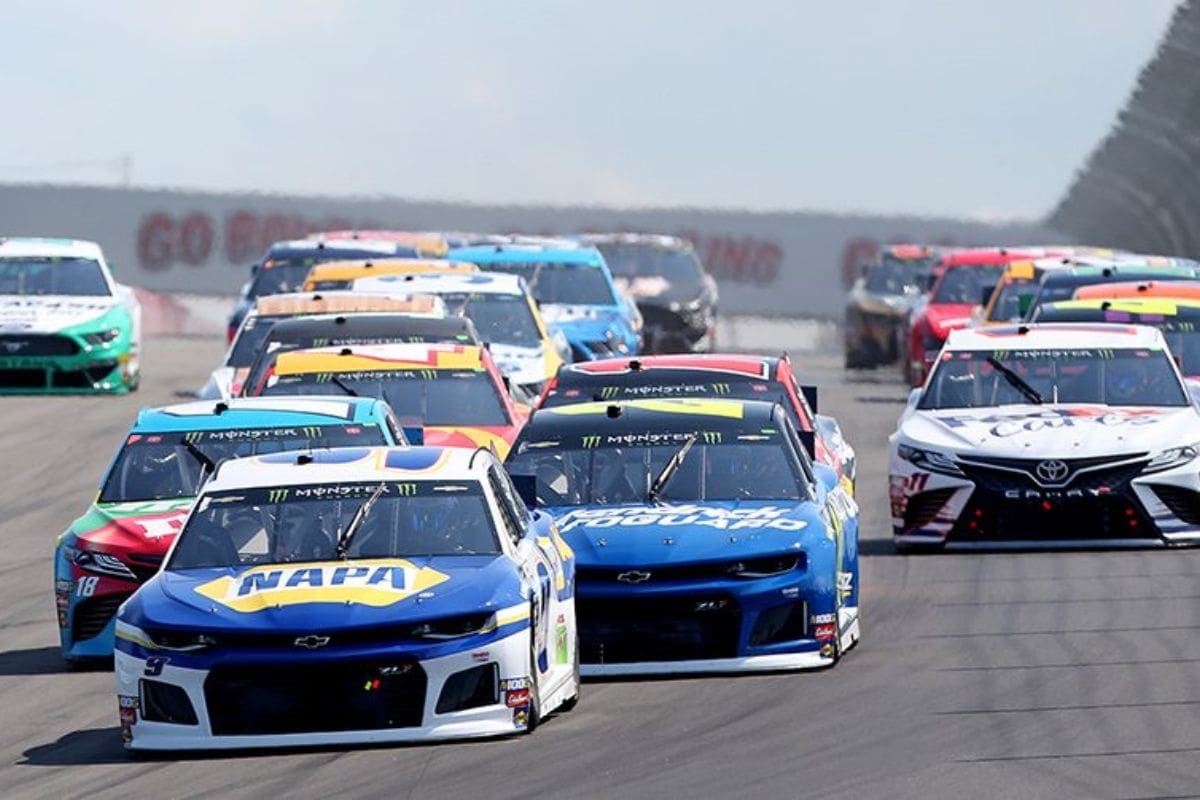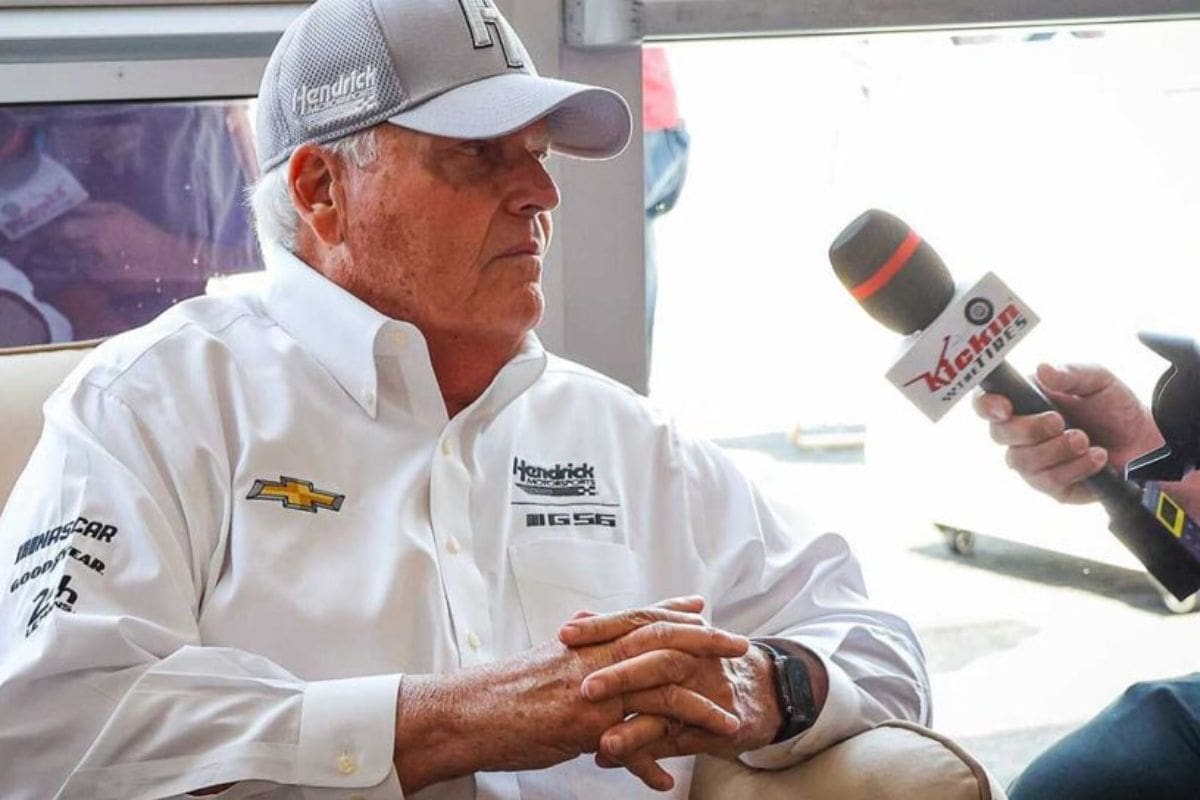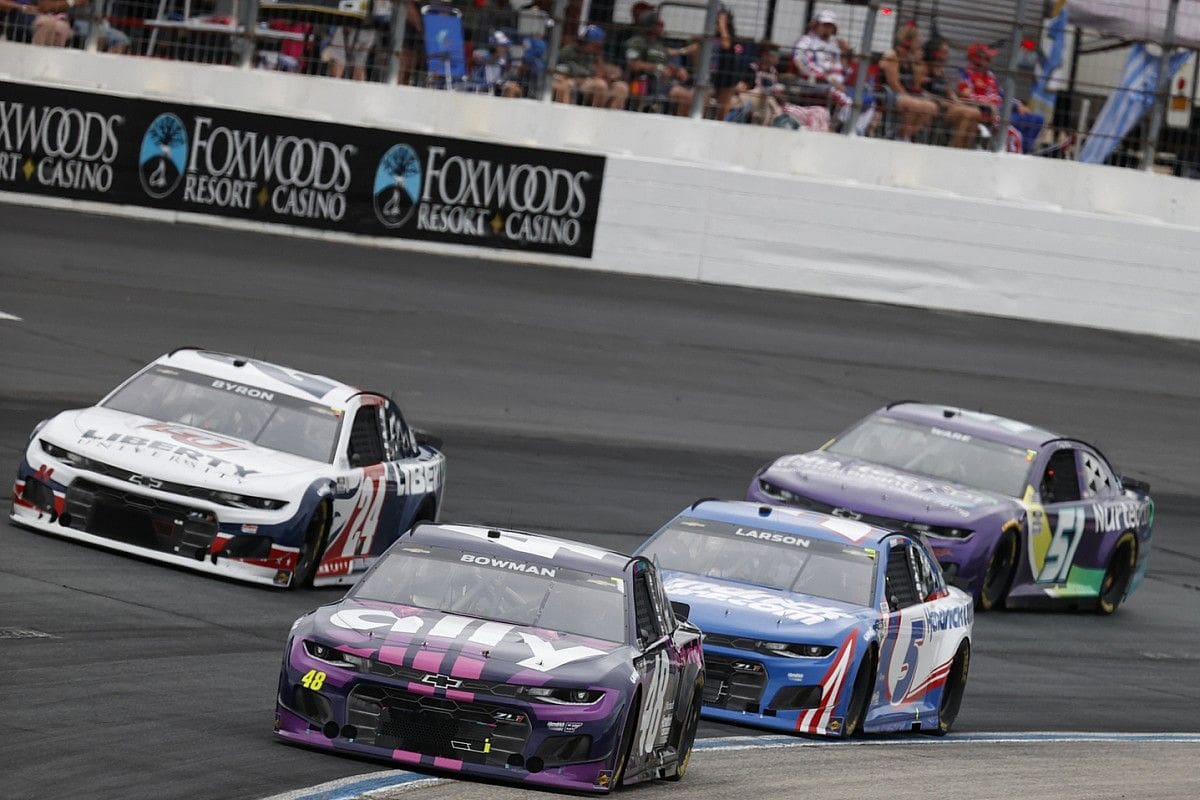Michael Jordan Fights Alone Against NASCAR Giants: Michael Jordan’s emergence as a singular force in NASCAR, following the retreat of established teams like Hendrick and Penske, raises critical questions about the future path of the sport. His stance not only challenges the status quo but also reflects a broader generational shift that advocates for diversity and innovation. However, the implications of his fight extend beyond personal ambition; they encompass the structural dynamics within the Race Team Alliance and the potential risks that both he and other emerging team owners may face. What strategies will Jordan employ to navigate this complex landscape, and can he truly reshape the competitive ethos of NASCAR?
Key Highlights
- Michael Jordan is challenging the status quo in NASCAR, representing younger owners amidst the dominance of legacy figures like Hendrick and Penske.
- Legacy owners have aligned with NASCAR, compromising the sport’s integrity and leaving Jordan to advocate for change largely on his own.
- Jordan’s unique position emphasizes the need for diversity and innovative strategies to engage younger audiences and reshape NASCAR’s future.
- Emerging teams like 23XI Racing face risks in disrupting established norms without significant support from heavyweight owners, complicating their strategic planning.
- The generational divide in NASCAR highlights a tension between preserving tradition and fostering collaboration among teams to ensure future viability.
Split within the Race Team Alliance
A fracture has emerged within the Race Team Alliance, emphasizing the complexities of loyalty and strategy in NASCAR’s evolving landscape. The recent split has seen prominent team owners like Rick Hendrick, Roger Penske, and Joe Gibbs align themselves with NASCAR, succumbing to demands that many perceived as compromising the integrity of the sport.
This shift marks a considerable departure from the collective unity that characterized the Alliance, reflecting the tension between traditionalists and the emerging influence of younger team owners, including Michael Jordan.
The reaction of the older guard illustrates a tactical calculation, as they prioritize their long-term interests over the fellowship that once united them. In their quest for stability amid an uncertain future, these legacy owners have employed convenient justifications for their defection, effectively sidelining teams like 23XI Racing and Front Row Motorsports.
These teams, having chosen to resist the strong-arm charter deal, now find themselves charting solitary waters, facing not only operational challenges but also existential threats to their viability in the NASCAR ecosystem.
As the landscape shifts, the implications of this split resonate beyond immediate team dynamics. It signals a crucial moment in NASCAR’s history, where the balance of power is in flux, and allegiances are tested.
The divergence between the old guard and newer entrants highlights the ongoing struggle for influence and recognition within the sport, setting the stage for potential confrontations that could reshape NASCAR’s future path.
NASCAR’s Strategy and the Legacy Owners’ Response
Frequently navigating through the complexities of its governance, NASCAR has tactically sidestepped collective discussions with the Race Team Alliance (RTA) in favor of individual negotiations with legacy team owners. This approach appears calculated to mitigate the influence of the RTA, particularly as the organization sought to unify its members against NASCAR’s evolving charter agreements.
The sanctioning body’s preference for one-on-one engagements has drawn attention to the historical power dynamics within the sport. The legacy owners—Rick Hendrick, Roger Penske, and Joe Gibbs—represent a formidable force, each with an illustrious record under the existing charter system. Their legacies, highlighted by numerous championships and wins, lend them considerable clout in negotiations.
The following table highlights the achievements of these legacy team owners, illuminating the rationale behind NASCAR’s tactical choice:
| Owner | Championships | Cup Victories | Charter Influence |
|---|---|---|---|
| Rick Hendrick | 14 | 310 | High |
| Roger Penske | 4 | 130 | High |
| Joe Gibbs | 5 | 180 | High |
| Total Legacy Wins | 23 | 620 |
As speculation mounts around the motivations for the new charter deal, analysts like Eric Estepp point to the historical success of these owners as a driving force, suggesting NASCAR’s calculated approach could reshape the future dynamics of the sport. The implications of this strategy will certainly reverberate throughout the racing community in the years to come.
Hendrick’s Decision and Its Implications
One can observe that Rick Hendrick‘s decision to align with Jim France‘s vision for the new charter deal marks a substantial turning point in NASCAR’s governance. This tactical pivot signals the consolidation of power among legacy owners, emphasizing the significance of long-standing relationships in shaping the sport’s future.
Hendrick’s sentiment of being “tired” after years of negotiation highlights the fatigue that has permeated discussions among these influential figures, suggesting a desire for stability over prolonged conflict.
“I was just tired…I think we worked really hard for two years and it got down to, you’re not going to make everybody happy.”-(rick hendrick)
The implications of Hendrick’s choice extend beyond mere compliance; it reflects a broader trend of established owners conceding to the framework set forth by NASCAR leadership.
As veteran driver Kevin Harvick notes, the interconnections among legacy owners—such as Hendrick, Richard Childress, and Roger Penske—create an intricate web of influence, wherein collective decisions can steer the direction of the sport. This cooperation could potentially stifle the emergence of new ideas and innovation, as the voices of these seasoned stakeholders dominate the conversation.
Moreover, Hendrick’s alignment with France may inadvertently signal to emerging team owners and stakeholders that dissent is futile, potentially dampening their influence in the decision-making process.
As the landscape shifts, the risk looms that NASCAR may become increasingly insular, prioritizing the interests of established entities over the aspirations of newcomers.
Consequently, Hendrick’s decision not only reshapes the immediate charter negotiations but may also set a precedent that reverberates throughout the sport for years to come.
The Younger Team Owners’ Position
The prevailing sentiment among younger team owners highlights a pronounced contrast to the established leadership within NASCAR. As evidenced by the actions of the Race Team Alliance (RTA), there exists a clear generational divide in the approach to advocacy and negotiation within the sport. While legacy owners, represented by figures like Rick Hendrick, opted to withdraw from vital discussions, the younger contingent, including key players such as Jeff Gordon and Curtis Polk, recognized the necessity of a united front. This tactical move indicates their willingness to challenge the status quo and pursue a more equitable framework for all teams.
“RTA intentionally tried to keep some of these legacy owners out of these meetings. Instead, they sent younger guys like Jeff Gordon, Dave Alper, Curtis Polk.” -(RICK HENDRICK)
The younger team owners, particularly those associated with 23XI Racing, have positioned themselves not merely as participants but as catalysts for change. Their proactive communication with NASCAR emphasizes a commitment to addressing unresolved issues and fostering productive dialogue that benefits the entire sport.
“We notified NASCAR what issues needed to be addressed, in writing, at the deadline, We are interested in engaging in constructive discussions with NASCAR to address these issues and move forward in a way that comes to a fair resolution while strengthening the sport we all love.”-(RICK HENDRICK)
This contrasts sharply with the reticence displayed by older owners, who appear more focused on preserving their established interests rather than risking their influence for a broader good.
The question of whether a more favorable deal could have emerged without the younger teams’ intervention remains speculative. However, it is evident that the outcomes derived from their engagement will reverberate throughout the NASCAR ecosystem.
The Risks Ahead for 23XI and Front Row Motorsports
While 23XI Racing and Front Row Motorsports have positioned themselves as advocates for change within NASCAR, they now face considerable risks that could jeopardize their ambitions. The decision of 23XI to engage in a high-stakes battle against the established giants of the sport comes with considerable financial and operational consequences.
With a recent $25 million investment in a Stewart-Haas Racing charter for 2025, CEO Bob Jenkins demonstrates a commitment to disrupting the status quo. However, this aggressive strategy places them in a precarious position, as they lack the heavyweight support enjoyed by more established teams.
The landscape is further complicated by the hesitance of other young team owners, like Justin Marks of Trackhouse Racing, who express admiration for 23XI’s resolve but remain cautious. Marks’ “I really admire 23XI’s conviction and commitment, and how hard they’re fighting for themselves and the teams in the sport, but I just don’t know what happens from here on out,” perspective highlights a broader apprehension among emerging teams regarding NASCAR’s rigid charter system.
His emphasis on partnership and collaboration reveals a fundamental divide in strategy: while 23XI and Front Row aim to challenge the system, others opt for a more conservative approach.
Without robust backing from influential stakeholders like Rick Hendrick, 23XI and Front Row Motorsports may find themselves isolated. As they navigate this turbulent environment, the potential for backlash from NASCAR’s governance and the financial implications of their choices loom large.
The stakes have never been higher, and the path forward remains fraught with uncertainty, as these teams endeavor to redefine their roles within a sport resistant to change.
News in Brief: Michael Jordan Fights Alone Against NASCAR Giants
Michael Jordan’s singular stance within NASCAR serves as a crucial catalyst for change amidst a landscape dominated by legacy teams. The contrasting strategies and responses from organizations like Hendrick and Penske reveal a crucial moment for the sport, emphasizing the necessity for diversity and innovation. As younger team owners grapple with the challenges posed by entrenched norms, Jordan’s efforts may inspire a broader movement toward transformation, ultimately reshaping the future of NASCAR.




